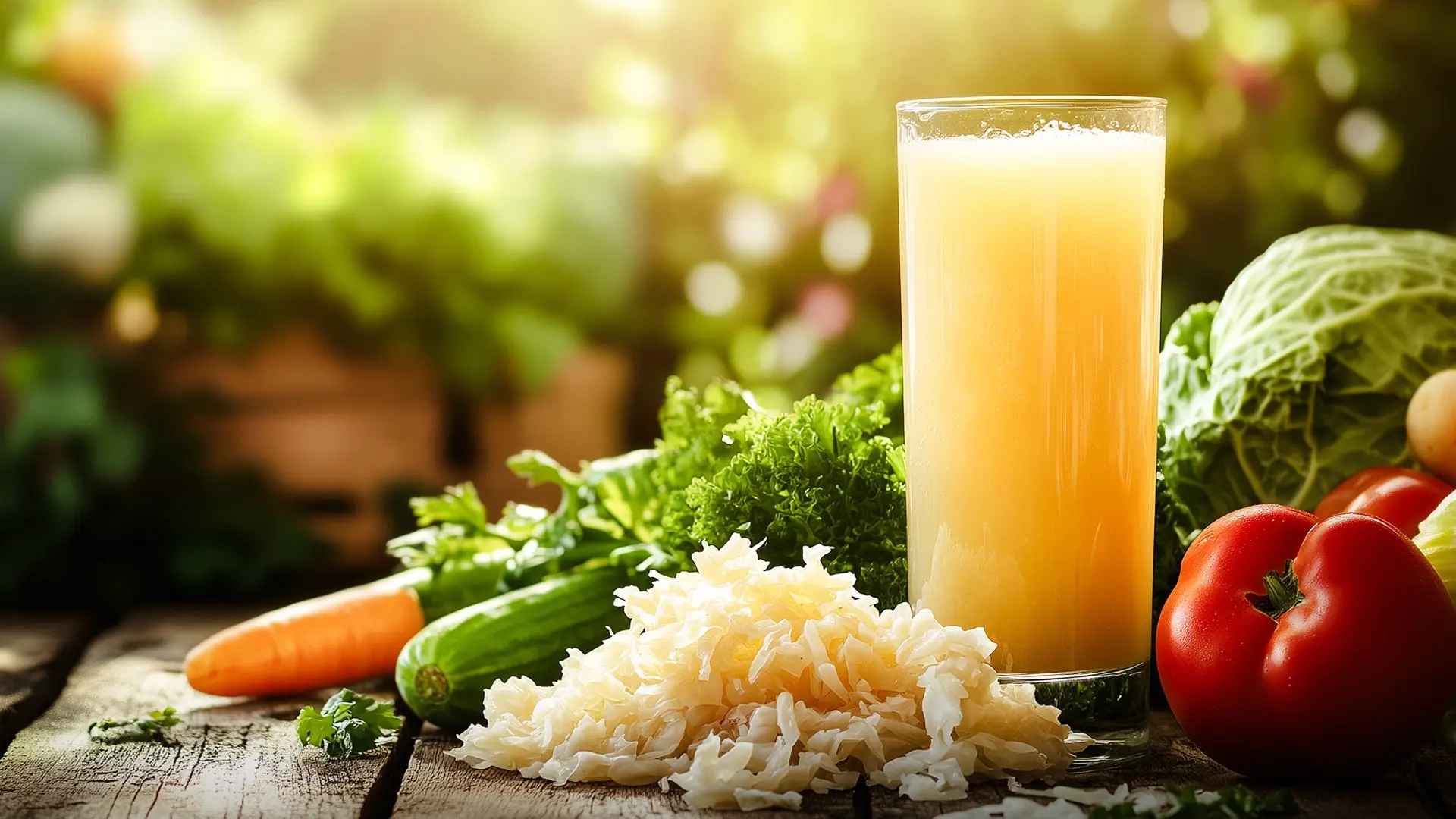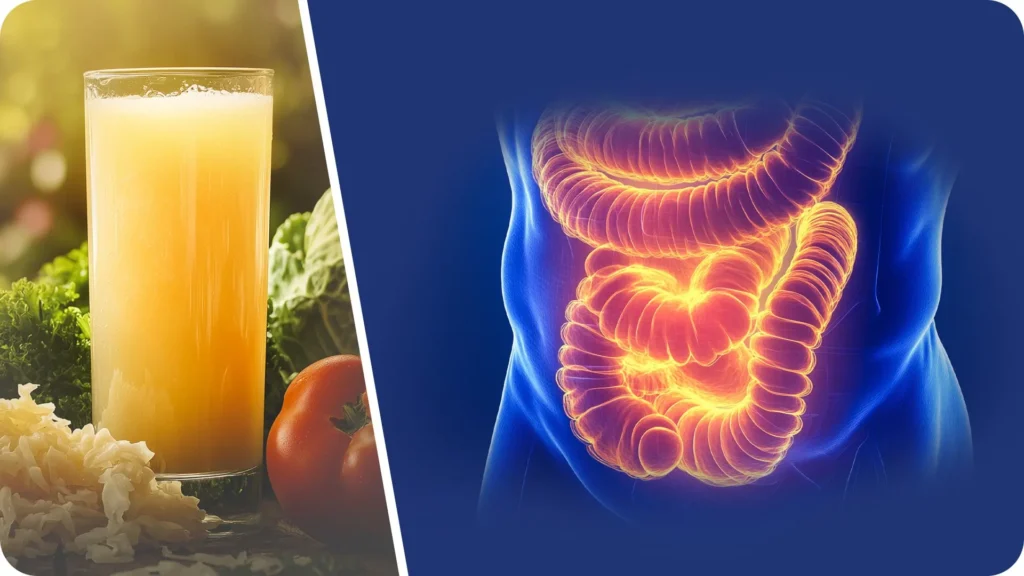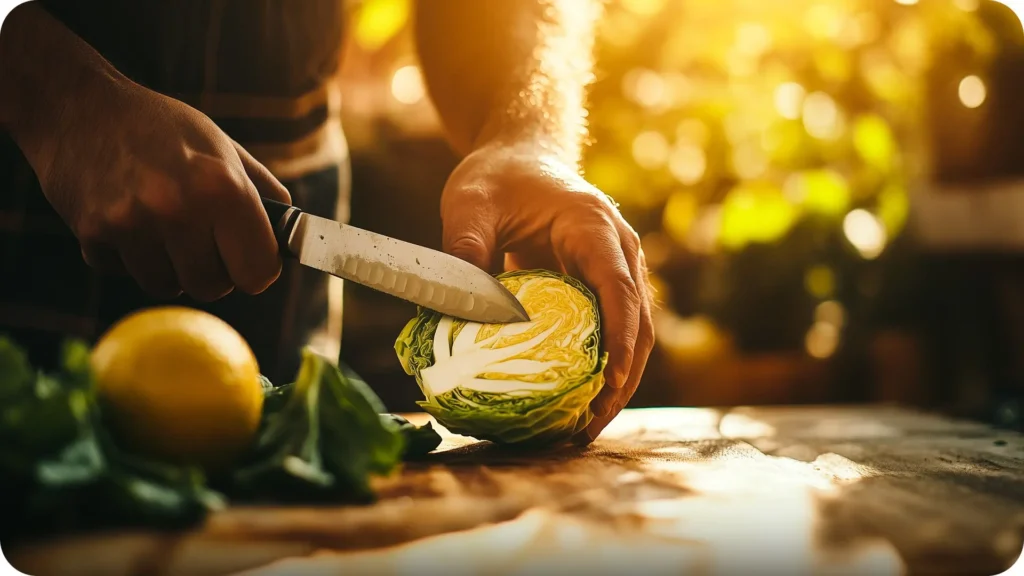
This Super Healthy Juice Uses Only One Vegetable
If you’ve been struggling with stomach issues like heartburn, bloating, or ulcers, and nothing seems to work, this might be just what you need. Today, we’ll discuss a natural drink that has transformed many people’s lives almost overnight. Aside from being incredibly healthy, it’s easy to make, and you’re likely to already have the ingredients in your kitchen.
The Amazing Components of This Juice
We’re talking about sauerkraut juice, also known as fermented cabbage juice. Raw cabbage juice by itself is rich in L-glutamine, vitamin U, and glucosinolates, all of which are very healthy.
But what makes sauerkraut juice so powerful is the fermentation process. This not only boosts its vitamin and enzyme content but it also fills the juice with live and healthy probiotics.
Health Benefits You Can Feel
One of the most noticeable benefits of sauerkraut juice is its ability to quickly soothe the digestive system. It’s naturally rich in lactic acid, which helps rebalance your gut microbiome and improve the absorption of nutrients. Sauerkraut juice also has a calming effect on inflammation, and its high vitamin C and antioxidant content helps support your immune system.

In addition, sauerkraut juice promotes the healing of the stomach lining and can also relieve conditions like gastritis, acid reflux, and ulcers.
In fact, a study from 2021 found that fermented cabbage products significantly improved intestinal microbiota composition and had anti-inflammatory effects in patients with gastrointestinal disorders.
How Sauerkraut Juice Supports Long-Term Health
Sauerkraut juice doesn’t just relieve you quickly. It also helps with long-term health. It improves nutrient absorption, which can increase energy levels, improve skin health, and reduce food cravings. It also supports the liver and detoxification pathways, helping your body eliminate toxins more efficiently.
But one of the most important long-term benefits is its potential to reduce the risk of chronic illness, including certain types of cancer. Fermented cabbage contains isothiocyanates, compounds that have been shown to prevent cancer due to their ability to help neutralize carcinogens in the body.
Dr. Budwig's View on Sauerkraut Juice
Interestingly, Dr. Johanna Budwig included sauerkraut and sauerkraut juice as essential parts of her protocol. She emphasized the digestive benefits and believed that good gut health was crucial for overall wellness and cancer prevention.
Dr. Budwig recognized early on that fermented cabbage wasn’t just good for digestion but also for treating and preventing cancer. Today, there is an abundance of studies and research that demonstrate the power of compounds like sulforaphane, indole-3-carbinol, ascorbigen, and probiotics, which have been shown to:
- Help the body eliminate harmful toxins
- Modulate hormone metabolism
- Protect cells from oxidative stress
- Strengthen the immune system
Sauerkraut is rich in these exceptional compounds. It’s no wonder that Dr Budwig recommended sauerkraut juice not only for its digestive benefits but also as a natural, plant-based way to support health, especially for those with a serious illness.
The Right Juice to Buy
You might be tempted to go right to your store and grab whatever is on the shelf. But unfortunately, most store-bought sauerkraut juices are pasteurized, which destroys the probiotics and enzymes that make them effective. To reap the most benefits, opt for raw, unpasteurized sauerkraut juice or, if possible, make your own at home.
How to Make Sauerkraut Juice at Home

Making sauerkraut juice is surprisingly simple; it might just take some time.
Simply follow these steps.
Ingredients:
- 1 medium head of green or white cabbage
- 1 level tablespoon of salt, according to personal preference. Don’t overdo it.
- 2+ carrots
- Optional: Apple for flavor
- 500ml (16 oz) Filtered Water
Instructions:
- Wash and shred the cabbage, along with any optional ingredients. With a knife or with a grater.
- Massage the salt into the cabbage until it begins to release juice. You can do this on a clean table or in a large, clean glass or stainless steel bowl.
- Place the cabbage in a glass jar.
- Press the cabbage down firmly to submerge it under its own juices. Add a little filtered water if needed to keep everything covered.
- Cover the jar loosely with a lid or cloth (allowing gases to escape) and leave it at room temperature for 3-5 days.
- Once fermented, strain the liquid into a clean jar.
Your sauerkraut juice is ready! - Store it in the fridge and consume about ¼ to ½ cup per day, preferably on an empty stomach.
Tip: If the flavor is too strong, dilute with water or mix with a small amount of apple or carrot juice to add some sweetness.
Conclusion
As we’ve seen, a lot of nature’s powerful remedies are hidden in plain sight. Sauerkraut juice may not seem flashy at first glance, but its benefits are quite surprising.
If you’re looking to improve your gut or simply feel better, Sauerkraut juice is a great place to start.
And what’s more shocking is how sauerkraut juice can contribute to preventing and even aiding your body to address cancer.
Obviously, if you’re dealing with cancer, just relying on sauerkraut juice isn’t enough.
This is why, apart from natural superfoods such as Sauerkraut juice, we recommend the full Budwig Protocol, which addresses the different aspects of health and disease.
We are helping people worldwide implement the full Budwig Protocol with unprecedented success, thanks to our Remote Program.
Click the button below to find out more.
Sources:
- Food for Breast Cancer. (n.d.). Cabbage.
- Good Nude Food. (n.d.). Health benefits of sauerkraut.
- Stanford Medicine. (2021, July 12). Fermented-food diet increases microbiome diversity, lowers inflammation.
- Clancy, R. (2024, April 1). 7 Health benefits of sauerkraut. Verywell Health.
- Second Opinion Physician. (n.d.). Detoxify the liver with vitamin U and cabbage juice.
- Dimidi, E., Cox, S. R., Rossi, M., & Whelan, K. (2019). Fermented foods: Definitions and characteristics, impact on the gut microbiota and effects on gastrointestinal health and disease. Nutrients, 11(8), 1806.
- Shapiro, T. A., Fahey, J. W., Wade, K. L., Stephenson, K. K., & Talalay, P. (2001). Hydrolysis of glucosinolates to isothiocyanates in humans after ingestion of cooked versus raw Brassica vegetables. Cancer Epidemiology, Biomarkers & Prevention, 13(1), 125–131.